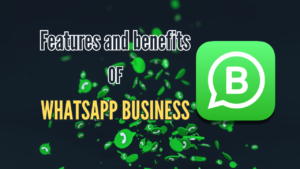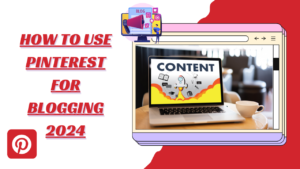
In today’s competitive landscape, businesses, regardless of size, often face the challenge of limited marketing budgets. The good news? Effective marketing doesn’t always require a hefty investment. In fact, many of the most impactful strategies come at no direct monetary cost, relying instead on creativity, time, and strategic effort. By leveraging these free avenues, businesses can significantly expand their reach, build brand loyalty, and drive growth. This article will explore nine powerful free marketing ways that any entrepreneur or marketer can implement to elevate their brand without breaking the bank.
1. Content Marketing: The Engine of Organic Reach
Content marketing is arguably the most powerful free marketing tool available. It involves creating and distributing valuable, relevant, and consistent content to attract and retain a clearly defined audience—and, ultimately, to drive profitable customer action. This isn’t about overtly selling; it’s about providing solutions, entertainment, or information that resonates with your target demographic.
- Blogging: A cornerstone of content marketing, a blog allows you to regularly publish articles, guides, and thought leadership pieces related to your industry. Each blog post is an opportunity to target specific keywords, improve your search engine ranking, and establish your authority.
- Educational Resources: Create e-books, whitepapers, infographics, or even simple how-to guides. These valuable resources can be offered for free download in exchange for an email address, helping you build your mailing list.
- Video Content: Platforms like YouTube, TikTok, and Instagram Reels offer immense reach. Create tutorials, behind-the-scenes glimpses, product demonstrations, or Q&A sessions. Video is highly engaging and can convey your brand personality effectively.
- Podcasts: If your niche lends itself to audio, consider starting a podcast. Interview industry experts, discuss trends, or offer insights. Podcasts build a strong connection with listeners.
Key takeaway: Consistent, high-quality content not only attracts organic traffic but also positions you as a thought leader, fostering trust and credibility with your audience.
2. Search Engine Optimization (SEO): Becoming Discoverable
SEO is the practice of optimizing your website and content to rank higher in search engine results (like Google). When potential customers search for products or services you offer, you want your business to appear prominently. The beauty of SEO is that once you’ve optimized your site, the traffic you receive is essentially free.
- Keyword Research: Identify the terms and phrases your target audience uses when searching for information related to your business. Tools like Google Keyword Planner (free) can help with this.
- On-Page SEO: Optimize your website’s content, meta descriptions, titles, image alt text, and internal linking structure using your target keywords.
- Technical SEO: Ensure your website is technically sound—fast loading, mobile-friendly, secure (HTTPS), and easily crawlable by search engines.
- Local SEO: For businesses with a physical location, optimize your Google My Business profile. This helps you appear in local search results and on Google Maps.
Key takeaway: Investing time in SEO ensures that your ideal customers can find you effortlessly, driving highly qualified organic traffic to your digital properties.
3. Social Media Marketing: Building Community and Engagement
Social media platforms are not just for personal connections; they are powerful marketing tools for businesses to connect directly with their audience, build brand awareness, and drive engagement. The key is to choose the platforms where your target audience spends their time and to offer genuine value.
- Consistent Posting: Regularly share engaging content, including images, videos, articles, and interactive posts (polls, questions).
- Audience Interaction: Respond to comments and messages promptly. Engage in conversations, answer questions, and show appreciation for your followers. This builds a sense of community.
- Live Sessions: Host live Q&A sessions, product launches, or behind-the-scenes tours. Live video generates high engagement and fosters real-time connection.
- Leverage Stories and Reels: These short-form, ephemeral content formats are incredibly popular and offer a way to share casual, authentic moments.
- Cross-Promotion: Share your content across different social media platforms and encourage your followers to do the same.
Key takeaway: Social media is about building relationships. Focus on genuine engagement and providing value rather than just pushing sales messages.
4. Email Marketing: Direct Communication and Nurturing Leads
While building an email list requires an initial effort (often through valuable content offers), the subsequent communication is largely free. Email marketing allows you to directly reach your audience with personalized messages, promotions, and updates.
- List Building: Offer compelling incentives (e-books, webinars, exclusive content, discounts) for website visitors to sign up for your email list.
- Segmentation: Segment your email list based on demographics, interests, or past interactions to send more targeted and relevant messages.
- Valuable Content: Don’t just send promotional emails. Share valuable content, industry insights, tips, and behind-the-scenes glimpses.
- Nurture Sequences: Create automated email sequences to welcome new subscribers, educate them about your offerings, and guide them through the sales funnel.
- Promotional Emails: Use emails to announce new products, sales, or special offers, but balance these with valuable content.
Key takeaway: Email marketing provides a direct, cost-effective channel for nurturing leads, building customer loyalty, and driving repeat business.
5. Online Directories and Listings: Enhancing Local Visibility
For local businesses, getting listed in online directories is crucial for discoverability. Many of these listings are free and significantly improve your local SEO.
- Google My Business: This is the most important. Claim and fully optimize your profile with accurate business information, photos, hours, and services. Encourage customer reviews.
- Yelp: A popular platform for customer reviews, Yelp can drive significant traffic, especially for restaurants and service-based businesses.
- Bing Places for Business: Similar to Google My Business, optimize your listing here for Bing search users.
- Industry-Specific Directories: Many industries have specialized online directories (e.g., Avvo for lawyers, Zocdoc for doctors). Find and list your business in relevant ones.
- Local Chamber of Commerce Websites: Many local chambers offer free or low-cost listings for their members.
Key takeaway: Listing your business in online directories boosts your visibility in local search results and enhances your credibility.
6. Public Relations (PR): Earning Media Mentions
Public relations, at its core, is about managing the spread of information between an individual or an organization and the public. While traditional PR can be expensive, many free PR tactics can generate valuable media mentions and build brand reputation.
- Press Releases: Write compelling press releases about significant company news (new product launch, major partnership, charity event, milestone). Distribute them to relevant media outlets. While some distribution services charge, you can directly pitch to journalists.
- Building Media Relationships: Identify journalists, bloggers, and influencers in your niche. Follow them on social media, engage with their content, and build genuine relationships before pitching your story.
- Thought Leadership Opportunities: Offer yourself as an expert source for articles or interviews. Share your unique insights on industry trends.
- Guest Blogging: Write guest posts for reputable industry blogs. This exposes your brand to a new audience and provides valuable backlinks for SEO.
- HARO (Help a Reporter Out): Subscribe to HARO. Journalists frequently send out queries looking for expert sources for their articles. Respond quickly and concisely to relevant queries.
Key takeaway: Strategic PR can earn your business valuable third-party endorsements, significantly boosting credibility and reach without direct advertising costs.
7. Online Reviews and Testimonials: Building Trust and Social Proof
In today’s digital age, online reviews are paramount. They serve as social proof, influencing purchasing decisions more than almost any other factor. Encouraging and managing reviews is a powerful, free marketing strategy.
- Actively Request Reviews: Don’t be shy about asking satisfied customers for reviews on Google, Yelp, Facebook, or industry-specific platforms. Make it easy for them to leave a review by providing direct links.
- Respond to All Reviews: Acknowledge both positive and negative reviews. Thank customers for positive feedback and address concerns professionally and empathetically for negative ones. This shows you value customer feedback.
- Showcase Testimonials: Feature positive testimonials prominently on your website, social media, and marketing materials. Video testimonials are particularly impactful.
- Resolve Issues Publicly (when appropriate): While you might take some issues offline, demonstrating a commitment to customer satisfaction publicly can turn a negative experience into a positive brand impression.
Key takeaway: Positive online reviews are free word-of-mouth marketing at scale, building trust and confidence in your brand.
8. Online Communities and Forums: Engaging Where Your Audience Gathers
Participating in online communities where your target audience congregates allows you to demonstrate expertise, build relationships, and subtly promote your brand.
- Reddit: Find subreddits related to your industry or target audience. Participate genuinely in discussions, offer helpful advice, and answer questions. Avoid overt self-promotion.
- Quora: Answer questions related to your expertise. Each answer is an opportunity to showcase your knowledge and subtly link back to your website or resources if relevant and allowed.
- Facebook Groups: Join relevant industry or interest-based Facebook groups. Contribute valuable insights, participate in conversations, and establish yourself as a helpful resource.
- LinkedIn Groups: Participate in professional discussions, share articles, and connect with peers and potential clients in your industry.
- Niche Forums: Many industries have dedicated online forums. Become an active and helpful member.
Key takeaway: By providing genuine value in online communities, you build credibility and organically attract individuals who may become customers.
9. Referral Programs: Harnessing the Power of Word-of-Mouth
While setting up a formal referral program might involve some initial thought, the core concept of encouraging existing customers to spread the word is inherently free. Satisfied customers are your best advocates.
- Ask for Referrals: Simply ask satisfied customers if they know anyone who could benefit from your products or services.
- Provide Excellent Service: The best referral program is simply delivering exceptional customer experiences. Happy customers are naturally inclined to share their positive experiences.
- Word-of-Mouth Campaigns: Encourage customers to share their experiences on social media. Run contests or campaigns that incentivize sharing.
- Partnerships: Collaborate with complementary businesses to cross-promote each other’s services to your respective audiences. While this might not be directly “free” if it involves formal agreements, many informal partnerships can be mutually beneficial.
Key takeaway: Leverage your existing customer base to generate new leads through the most trusted form of marketing: word-of-mouth.
Conclusion
The notion that effective marketing always demands a substantial budget is a misconception. As demonstrated, a wealth of free marketing strategies can deliver remarkable results when executed thoughtfully and consistently. From establishing your authority through content marketing and optimizing for search engines to building vibrant communities on social media and nurturing leads via email, the opportunities are vast. By committing time, creativity, and strategic effort to these nine free marketing ways, businesses of all sizes can significantly enhance their visibility, build strong customer relationships, and unlock sustainable growth without incurring significant financial costs. The key is to be patient, persistent, and genuinely focused on providing value to your audience.





